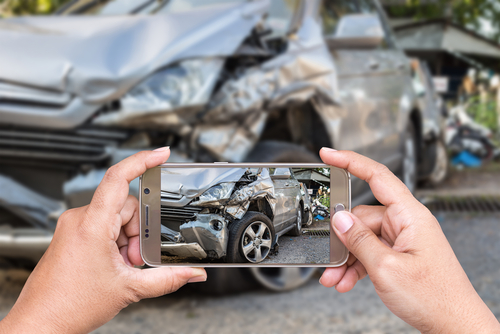Introduction
Automobile accidents are unexpected and unsettling events that can leave you feeling disoriented and stressed. Once everyone's safety has been ensured, it's essential to assess the damage to your vehicle, even if it seems minimal. Often, the impact of a collision can lead to hidden issues that might worsen over time if not addressed promptly. In this article, we'll discuss the crucial steps to take after a collision and the key aspects to check on your car to ensure its safety, performance, and longevity.
- Prioritize Safety First
Before delving into the inspection process, ensure the safety of all parties involved. Move your vehicle to a safe location if possible, away from traffic. Turn on your hazard lights to alert other drivers, and if necessary, set up flares or warning triangles to indicate your presence on the road. If there are injuries, call emergency services immediately.
- Document the Scene
If it's safe to do so, document the scene of the accident with photos or videos. Capture images of the damage to all involved vehicles, as well as the overall accident site. This documentation can be useful for insurance claims and legal purposes.
- Exchange Information
Exchange contact and insurance information with the other parties involved in the collision. This includes names, phone numbers, addresses, driver's license numbers, and insurance details. If there are witnesses, obtain their contact information as well.
- Notify Your Insurance Company
Contact your insurance company as soon as possible to report the accident. They will guide you through the claims process and provide you with the necessary steps to follow. Keep in mind that some insurance companies have specific timeframes within which you must report accidents.
- Assess Visible Damage
Inspect your vehicle for visible damage. This includes dents, scratches, broken lights, and misaligned panels. Even seemingly minor damage can impact your car's structural integrity and overall appearance. Take notes and photographs for reference.
- Check for Fluid Leaks
After a collision, your vehicle might develop fluid leaks. Check under your car for any signs of leaking fluids such as oil, coolant, brake fluid, or transmission fluid. Fluid leaks can indicate damage to essential systems that need immediate attention.
- Test Lights and Signals
Ensure all your vehicle's lights and signals are functioning correctly. This includes headlights, taillights, turn signals, brake lights, and hazard lights. Proper lighting is crucial for your safety and the safety of other drivers on the road.
- Examine Tires and Suspension
Inspect your tires for signs of damage, such as punctures, cuts, or uneven wear. Misalignment due to the collision can lead to premature tire wear and affect your vehicle's handling. Also, check the suspension for any visible damage or unusual noises when driving over bumps.
- Open and Close All Doors and the Trunk
Operate all doors and the trunk of your car to ensure they open and close smoothly. Misalignment can cause difficulty in closing these parts or indicate damage to the hinges.
- Check the Alignment
If you suspect that your vehicle's alignment has been affected, pay attention to how your car handles when driving. Does it pull to one side? Is the steering wheel off-center? A misaligned vehicle can lead to uneven tire wear and compromised driving stability.
- Inspect the Frame and Undercarriage
If the collision was severe, there might be damage to your car's frame or undercarriage. Look for any signs of crumpling, bending, or misalignment in these areas. Frame damage can significantly impact your vehicle's structural integrity and should be addressed promptly.
- Test the Brakes
Your vehicle's braking system is crucial for your safety. After a collision, test your brakes for any changes in performance. Pay attention to any unusual noises, vibrations, or difficulty in stopping. If you notice any issues, have your brakes inspected by a professional.
- Check Airbags and Seatbelts
If your airbags deployed during the collision, they will need to be replaced. Additionally, check your seatbelts for any signs of damage. Seatbelts play a vital role in keeping you safe, so they must be in proper working condition.
- Inspect the Engine Compartment
Open the hood and inspect the engine compartment for any visible damage. Look for leaks, loose components, or displaced parts. Even if your vehicle seems to be running fine, underlying engine damage might not be immediately apparent.
- Drive Test
Take your car for a short test drive in a safe area. Pay attention to how it accelerates, steers, and brakes. Listen for any unusual noises and observe any changes in handling. If you notice anything out of the ordinary, consult a mechanic.
Conclusion
After a collision, it's imperative to conduct a thorough inspection of your vehicle, even if the damage appears minor. Hidden issues can compromise your car's safety, performance, and longevity if left unaddressed. By following the steps outlined in this article, you can identify potential problems and take the necessary actions to restore your vehicle to its optimal condition. Remember that your safety and the safety of others on the road depend on the proper functioning of your vehicle, so don't hesitate to seek professional assistance if you're unsure about any aspect of the post-collision inspection process.

